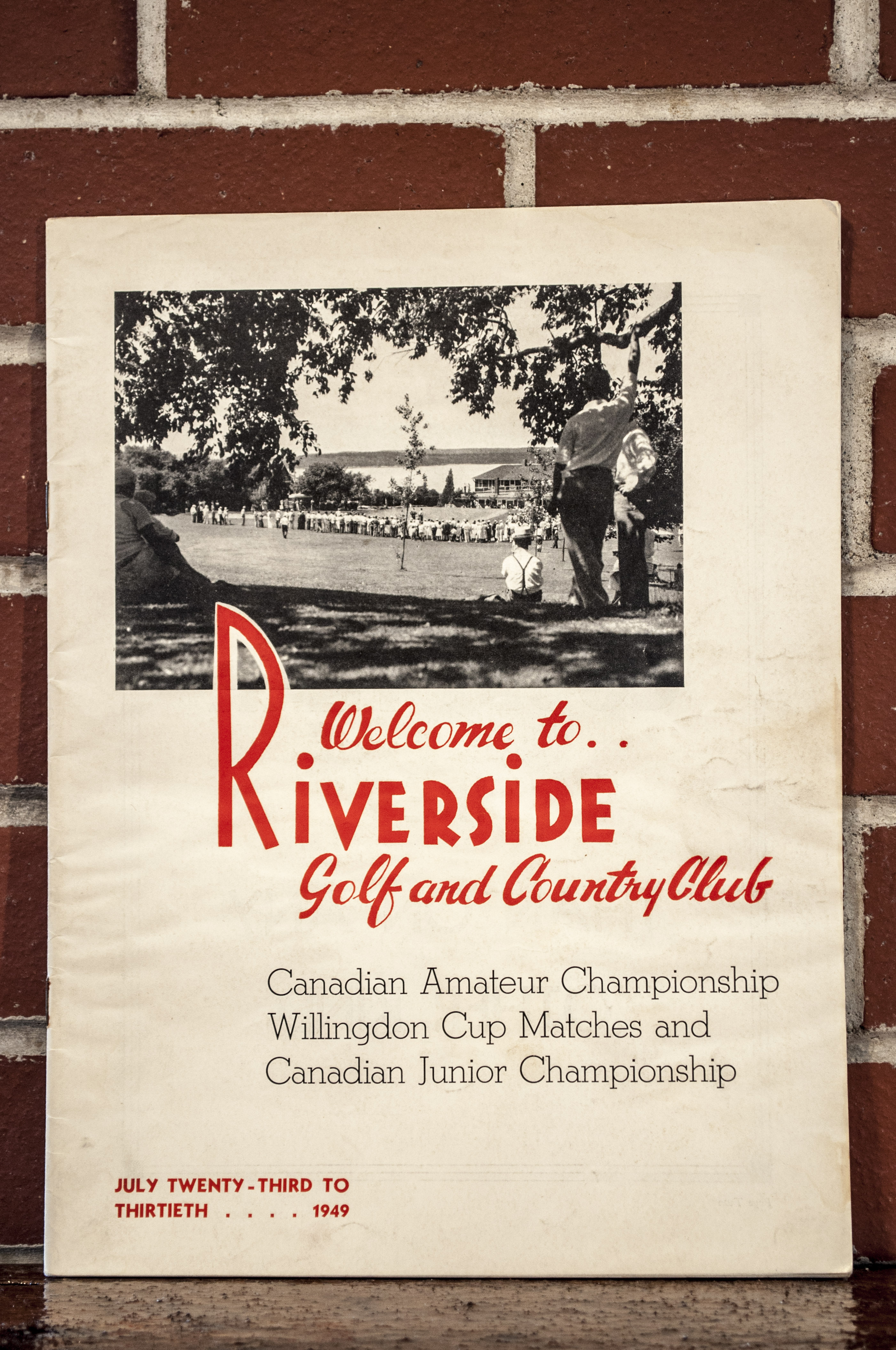
This is an excerpt from the official program of the 1949 Candian Amateur Championship.
Riverside, the course that baffled the experts, is going to be made even more difficult for the par busters.
At least that is the present plan of the board of directors, who have had a number changes in the course layout drawn up - changes that will raise the par from 70 to 73 and increase the length from 6,265 to 6,575 yards.
However, the proposed changes are part of a long-range plan and it will be some years before they actually take place.
Some think the par 73 will be easier to negotiate, while others contend the longer course and revised holes will make par-shooting even more difficult. If the latter line of thought is correct, then golfers will have something to worry about. Even the world's leading pros couldn't match stroke with Old Man Par at Riverside during the Canadian open in 1939.
Wrested from typical Canadian Wilds and fashioned into one of the most scenic sports spots in the Dominion, the Riverside Golf and Country Club has had a colourful history. In the last 10 years alone, four national tournaments have come to the Riverside club and the course has been classed with the best in North America.
Establishment of the course at Riverside, which is situated on the rolling slopes of the Kennebecasis River about seven miles east of the old Loyalist City of Saint John, truly is a story of real pioneering. Built during the First World War on a small scale and gradually enlarged to some 5,265 yards par-70 layout of today, it was only achieved through the efforts of stout-hearted men who were determined to raise the standard of their course to championship level. Credit as originator of golf in the Maratime Provinces is given to John White, a Scot, who brought his clubs from the "Land o' th' Hether" in 1863 and settled in the Saint John district. One of the original clubs, bought at St. Andrews, Scotland, in 1858 (hung in the Riverside clubhouse until a fire destroyed the building) as one of the organizations prized souvenirs.
John White, who in the last few seasons preceding his death some years ago, was known as the oldest active golfer in the British Empire, used to practice on the sand flats at Courtney Bay, Saint John when the famous 25- and 28-foot tides of the Bay of Fundy were out. He had to play his golf in this manner at low tide as there was no thought of a golf course in the Loyalist city then, and the few acres under cultivation or fields were too much in demand for agriculture purposes to give heed to sport.
But in 1896 a few public spirited men got together and their activities resulted in a four-hole course being built.
This marked the start of the Saint John Golf Club which was extended to nine holes later. A large crowd gathered for the opening day in 1896 and quite a sensation was caused, not without its humorous side, when the very first drive of the day resulted in a hole-in-one.The first ball struck rolled into the cup and the spectators started to leave, thinking such a simple game was stupid to watch. Upkeep of the course was done by one man and a horse. The greens had to be surrounded by wire fences to keep cows off. Dues were only $10 then. It was on this course that Miss Mabel G. Thompson learned to play and later startled the golfing elite by coming out of the east unheralded to win the Candian Ladies' title. Miss Thompson, a resident of Saint John and Rothesay, carried off the Women's crown in 1902 at Toronto Golf Club, lost in 1903 and 1904 and then won four years running despite the fact that Saint John had no professional or instructor of any kind and she had to practically teach herself.